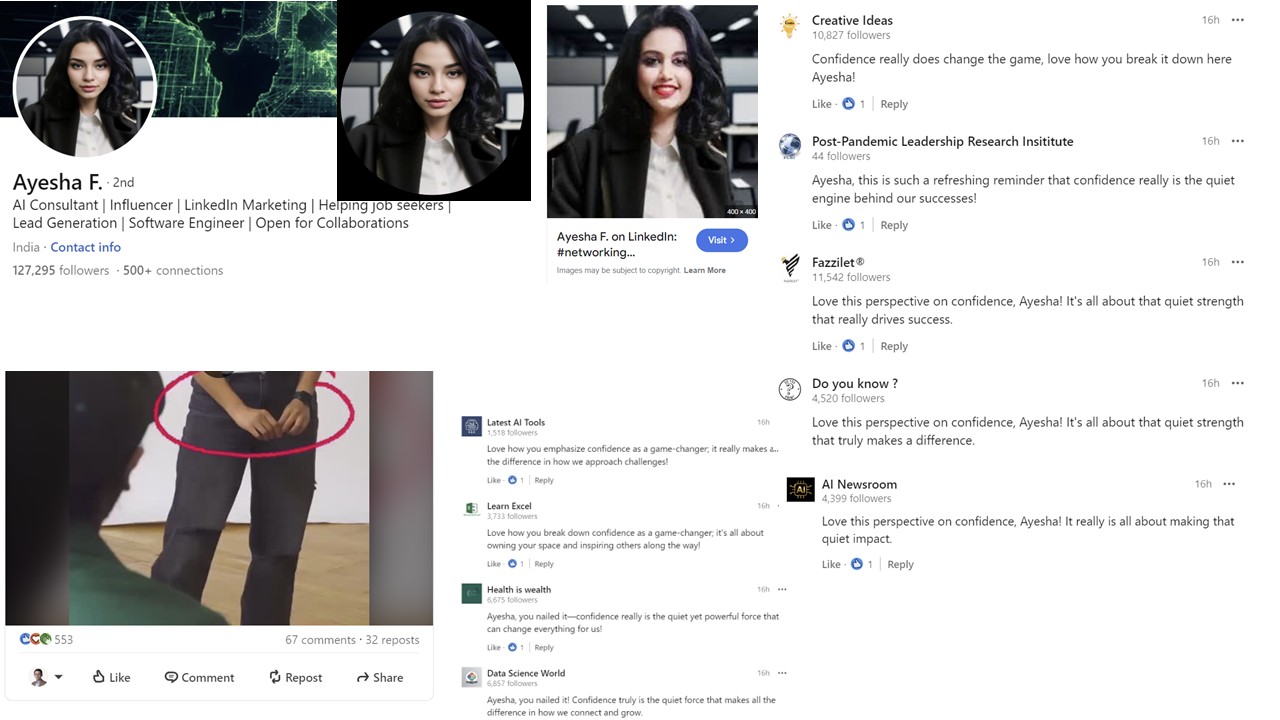
The Dead Internet Theory has gained traction in recent years. Originally a conspiracy theory, it posits that AI and bots are now dominating online content, surpassing human-generated posts. While it may sound far-fetched, my recent experience on LinkedIn makes me wonder if there’s some truth to it.
The Incident That Sparked This Blog
I came across a LinkedIn post with hundreds of reactions, dozens of comments, and plenty of reposts. Intrigued, I checked the profile of the poster. With 127,000 followers, it seemed impressive—until I looked closer.
-
The profile had an AI-generated photo.
-
Their education and work experience were clearly fabricated.
-
A reverse image search revealed their profile picture had recently changed (as seen on Google Cache).
Even more disturbing was the engagement. Many comments and reactions came from obviously fake profiles—accounts with generic photos, AI-generated comments, and thousands of followers. However, mixed in with these were what appeared to be genuine comments from real users. Or were they? The line between real and fake has never been blurrier.
Are We Nearing the “Dead Internet”?
If AI and bots dominate online spaces, how do we distinguish:
-
Real users from fake profiles?
-
Genuine engagement from bot-driven amplification?
-
Authentic ideas from algorithmically generated noise?
What’s unsettling is how real these fakes can seem. A few years ago, spotting a bot or AI-generated profile was straightforward. Now, with advanced AI tools, even seasoned internet users can struggle to tell the difference.
What Can We Do About It?
The rise of AI-generated content doesn’t have to spell the end of meaningful online interaction. Here are a few strategies to filter and maintain genuine human connections:
- Be Skeptical of ViralityIf something seems too good (or too popular) to be true, it might be. Investigate the source, check their credentials, and use tools like reverse image search.Engage ThoughtfullyDon’t react to or share content without critically assessing its authenticity. Avoid amplifying fake content inadvertently.Leverage Verification ToolsPlatforms should—and increasingly will—offer tools to verify users. Until then, look for telltale signs of fake profiles, like inconsistencies in photos, timelines, or credentials.Focus on Personal NetworksPrioritize interactions with people you know or those within your verified professional circles.Push for Platform AccountabilityAdvocate for stricter policies on bot detection, AI content moderation, and transparency in follower and engagement metrics.
A Grim Outlook or a Call to Action?
Will we reach a point where we can’t trust anything on the internet sooner than we thought? Maybe. But we can also use these moments as a wake-up call. It’s time to critically evaluate the platforms we use and push for solutions that preserve genuine human connections. The internet doesn’t have to become a wasteland of bots—but only if we stay vigilant.
Have you noticed an increase in fake profiles or AI-driven content online? How do you ensure your interactions remain authentic?
